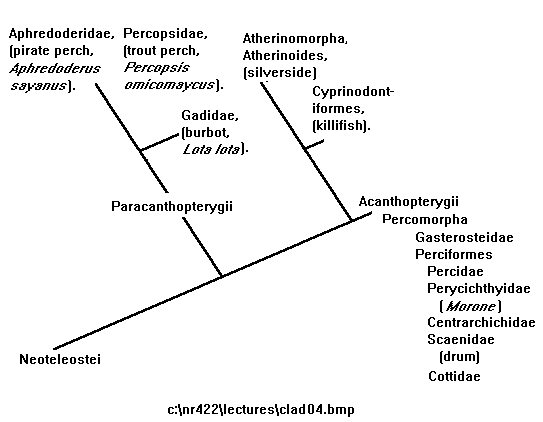



The goal of cladistics is delimitation of a hierarchy of groups.
1) Shared features (homologies) manifest hierarchical patterns because all organisms are derived from others.
2) Hierarchies are economically expressed in branching diagrams (cladograms) of equal status sister groups. Choices among possible cladograms are made on the basis of parsimony.
3) Nodes occur delimiting all organisms that share derived characteristics.
The resulting cladogram is an hypothesis of relationships, with the expectation that analysis of additional characters will support the hypothesis.
Phenetics (numerical taxonomy) starts with species as operational taxonomic units (OTUs) and clusters these on the basis of overall similarity. Advocates believe that the more characters used, the more natural will be the classification.
In general, this leads to the identification of life-form groups that are expressed as phenograms or the "traditional" classification such as:
Phylum Chordata
Subphylum "Acrania"
Subphylum Vertebrata
Superclass Agnatha
Class Cyclostomata
Order Petromyzonta
Order Myxinoidea
Superclass Gnathostomata
Class Elasmobranchii (Chondrichthyes)
Subclass Selachii
Subclass Bradyodontii (Holocephali)
Class Actinopterygii
Superorder Chondrostei
Superorder Holostei
Superorder Teleostei.
These life-forms are often the practical basis for study - fish, reptiles, birds etc. but are typically paraphyletic, or a subset of one or more clades.
Evolutionary Systematics considers that the amount of time and differentiation that has taken place in that time. An attempt is being made to combine cladistics and evolutionary systematics in quantitative evolutionary systematics. It starts with a cladogram and adds back additional information not useful in determining the branch points.
Keys sort out local assemblages of organisms. They largely use simple external characters pertinent only to the local fauna. Many features used in keys are not homologies.
Michigan Fishes
|
|
|
|
|
|
|
|